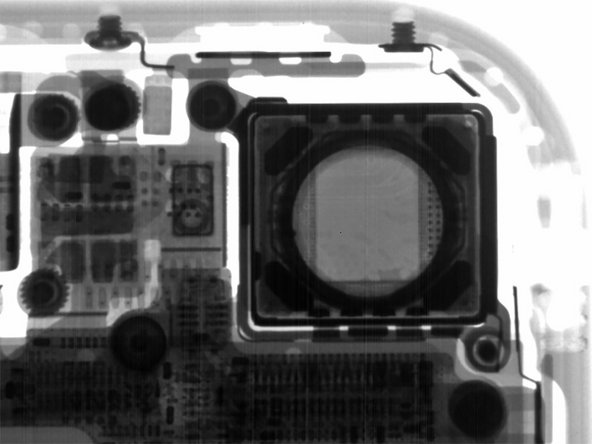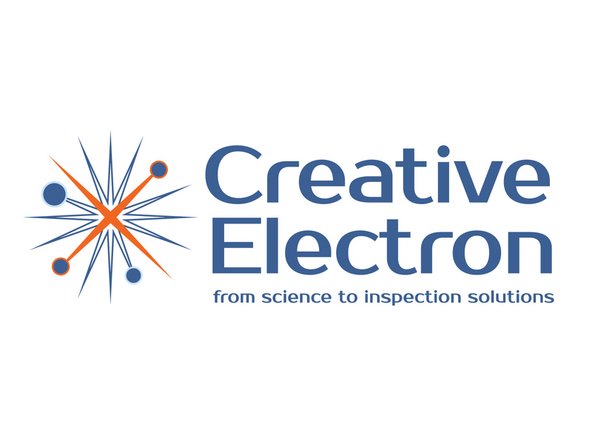How To Open Iphone 8
This teardown is not a repair guide. To repair your iPhone 8, use our service manual.

-
The 8 has some slick new tech, but is it enough to warrant the upgraded digit? You be the judge:
-
A11 Bionic chip with embedded M11 motion coprocessor
-
64 or 256 GB onboard storage capacity
-
4.7-inch IPS multitouch Retina HD display with 1334 × 750 resolution (326 ppi)
-
12 MP camera with ƒ/1.8 aperture, optical image stabilization, and 5x digital zoom
-
7 MP FaceTime HD camera with ƒ/2.2 aperture and 1080p HD recording capability
-
Support for fast-charge and Qi wireless charging
-
802.11a/b/g/n/ac Wi‑Fi w/MIMO + Bluetooth 5.0 + NFC



-
As we start our teardownunder we're greeted by a now-familiar face. Features include:
-
Solid-state home "button" with Touch ID fingerprint sensor.
-
A (still) IPS display similar to the one we found in the iPhone 7 (but now featuring True Tone).
-
On the backside, we spy the iPhone's snazzy new glass backing with its seven-layer color finish.
-
Apple assures everyone that this rear panel is reinforced with "an internal laser-welded steel and copper structure," but time and durability tests will tell if this phone will suffer from a snap, crackle, pop—or yet another Bendgate.
-
Jury is still out on the model number and the missing wheely-bin symbol.
-
Finally, before getting to work, we take a second to line up our new gold iPhone 8 and yesteryear's rose gold 6s. Apple has certainly refined (and re-refined) this design, in addition to stripping a little pink from the finish.



-
Before we excavate, we X-ray!
-
Our pals at Creative Electron came down under to Circuitwise and snagged some stellar sneak peek imagery.
-
The seamless back gives way to some intricate insides. The first thing we spy is the brand new wireless charging coil!
-
More on that later. For now, we put down the X-ray goggles to plan our attack.
-
Turns out you don't need X-ray vision to see the model number on this blank-backed phone—it's here on the rosy gold box—A1863!
-
It seems that when Apple set out to clean up the back of the iPhone, it decided to follow all the way through. We're guessing we won't find a cute ID card in the SIM tray, though.
-
Time to get this teardown underway. After twirling away the pentalobe screws, we need some heat as an antidote to the waterproof display seals.
-
iOpener—bam! Seals softened. Next we pull the iSclack out of our tool bag for some pulling power, and slice through the adhesive with a little help from
our friendsopening picks. -
Do you ever have déjà vu?
-
... and we're in! A first glance reveals nothing new—yet. But we've only just scratched the glassy surface.



-
As we crack open this
bookdisplay, we are greeted by the familiar display cable bracket. But instead of the cursed tri-point screws, we're happy to report that we're met with friendly Phillips #000 screws! -
We can't say that we will miss you, tri-points.
-
We quickly decouple a few cables—the battery, display, and home button cables to be exact—and the display is free!
-
We note a lack of gaskets on the display's pentalobe tabs, which was previously seen in the iPhone 7.
-
However, both the iPhone 7 and iPhone 8 have an IP67 water resistance rating. How are the floodgates still closed!?



-
We make a grab for the battery's stretch-release adhesive strips, and find there are two more of these guys than we're used to.
-
But that's okay—we just ask for a hand (or two), and remove all four at once!
-
This procedure requires a wealth of experience, gained in large part due to Stretch Armstrong.
-
We easily throw back the
mozzarella stickspull tabs as the battery springs free effortlessly.




-
Now that this juicy battery pack is out, we can see how it compares to its competitors!
-
Fully topped off, this 3.82 V, 1821 mAh cell will deliver up to 6.96 Wh of power.
-
To compare Apples to Apples, the iPhone 7 featured a 7.45 Wh battery.
-
And for reference, the similarly-spec'd Galaxy S8 packs a 11.55 Wh battery.
-
Before you get hopping mad about battery news: despite the drop in capacity, Apple claims battery life will be comparable to last year's unit.



-
We pluck the main camera in pursuit of the logic board.
-
The iPhone 8 has the same ƒ/1.8, 6-element lens that we saw on the iPhone 7, but everything else about the camera is new and improved.
-
The 8's sensor is bigger than the 7's, but specs the same 12 MP resolution. This means the individual pixels are larger—letting in more light, improving colors, and decreasing noise.
-
But wait, there's more! Improved image processing software shows Apple still has a few clever tricks up its sleeve.
-
We've seen this before, but not with the naked eye! Neat X-rays reveal magnets in the four corners of the camera—giving this camera some advanced vision of its own through OIS.



-
As our quest continues, we find some quirky cables and brackets!
-
First out: a new Lightning port bracket that seems to reinforce the new peach-colored port and trap the Taptic engine.
-
Up to now, we've gleefully plugged along with our Phillips screwdriver—but alas, all good things must come to an end. In removing this bracket, we encountered our first tri-point screw. Still, it's no match for our 64 Bit Driver Kit!
-
We suspect that the newly colored Lightning port could be made of a heat-transferring plastic to allow for safer fast-charging. (Or, it could just be color-matched to the chassis.)
-
Next: a strange interconnect/antenna cable over the speaker.
-
Finally: the Taptic Engine nestled in a series of tiny fiddly connectors.




-
The final barrier to logic board gold: this tiny hidden screw, which we find trapped under the waterproof silicone seals!
-
We get another helping hand in the form of Jumpy's for logic board removal!
-
Kangaroo-shaped, chicken-flavored snacks aside, we hope you're not jumpy for the iPhone X. Reports say that production could start as late as mid-October—meaning the 8 could be the hardware of choice for early upgraders as well as those in Apple's Upgrade Program.



-
Drumroll please—it's chip time! Special thanks to the folks at TechInsights for helping scope out this silicon:
-
Apple 339S00434 A11 Bionic SoC layered over SK Hynix H9HKNNNBRMMUUR 2 GB LPDDR4x RAM
-
Qualcomm MDM9655 Snapdragon X16 LTE modem
-
Skyworks SkyOne SKY78140
-
Avago 8072JD130
-
P215 730N71T, likely an envelope tracking IC
-
Skyworks SKY77366-17 quad-band GSM power amplifier module
-
NXP Semiconductor 80V18 (PN80V) secure NFC module




-
And on the back side:
-
Apple/USI 170804 339S00397 WiFi/Bluetooth module
-
Apple/Dialog Semiconductor 338S00309 PMIC and Cirrus Logic 338S00248 audio codec and 338S00286 audio amplifier
-
Toshiba TSBL227VC3759 64 GB NAND flash storage
-
Qualcomm WTR5975 Gigabit LTE RF transceiver and PMD9655 PMIC
-
Broadcom BCM59355—Likely an iteration of BCM59350 wireless charging IC
-
NXP CBTL1612A1—Likely an iteration of the 1610 tristar IC
-
Skyworks 3760 3576 1732 RF switch and SKY762-21 247296 1734 RF switch




-
IC Identification, continued:
-
Cypress Semiconductor CYPD2104C USB type-C port controller
-
Texas Instruments SN2501 li-ion battery charger
-
Texas Instruments SN61280E battery boost converter
-
Texas Instruments LM3539 LED driver
-
Texas Instruments TPS65730 ? display power management (likely)
-
Bosch Sensortec accelerometer/gyroscope
-
Bosch Sensortec BMPxxx ? pressure sensor




-
Logic board dispatched, we get down to
brass tacksplastic bits. Today's bits feature the speaker and barometric vent. -
As we learned last year, this barometric vent allows your iPhone to accurately gauge your altitude, while maintaining a watertight seal.
-
Another small spec bump: Apple touts that the speakers are 25% louder in the iPhone 8—although there is some debate as to whether it is noticeable.
-
The same dozen
donutspeaker holes line the bottom of this iPhone as the 7. -
We also find familiar signs of waterproofing in the form of seals and little rubber gaskets.



-
The rear case is looking a little thin on components, but we still find a few pieces that invite inquiry.
-
The peach-colored Lightning connector looks like it has changed a li'l since the iPhone 7. Without getting distracted by the desert camo, we notice a new form factor. Better ingress protection, mayhaps?
-
We dig through some black tape that covers some copper tape that covers some
black tape... wait a second ... -
That ain't just black tape, it's the elusive Apple-branded, Qi (pronounced "chee")-enabled wireless charging coil!
-
This coil uses an oscillating magnetic field to generate an alternating current. The alternating current is then converted to direct current—the magic juice that fuels the battery.



-
We take a stab at separating the rear glass, but after a lot of heat and wetwork, we've instead shivved our way under the reinforcement panel.
-
After more arduous stabbing, we finally get the seven-layer
burritoglass sandwich off of the midframe. -
This isn't what we thought Apple meant when they said the glass was stronger.
-
The process left the backing plate a bit bent out of shape—we have no idea how Apple plans to do this, but they seem to be keeping the secret squirreled away...
-
And no, we didn't let snails figure-skate on the back—that's glue. Lots of it.
-
This side-by-side reminds us of something we recently noted.



-
We finally turn back to the well-known display and pluck the final features away.
-
Goodbye home button.
-
Goodbye front-facing sensor cable.
-
Goodbye LCD shield.
-
Oh, but hey li'l chip we can't identify.
-
Once again, the light sensor is covered by a colored filter, which we believe assists the True Tone system.



-
That's all she wrote! Well, at least for now—we've got a few more words and photos in store for you in the next few days!
-
Thanks heaps to Circuitwise for hosting us at their sweet facility in Sydney. (Seriously, check out that sweeet soldering video.)
-
And big thanks to the Creative Electron team for providing some serious X-ray support!
Final Thoughts
- The two most commonly replaced components, display and battery, remain straightforward to access with the proper knowledge and tools.
- The addition of wireless charging means less strain on your Lightning port, a common point of failure.
- Water and dust seals complicate repair, but make the need for difficult liquid damage repairs less likely.
- The battery connector once again sports common Phillips/JIS fasteners—but you'll still need up to four different driver types for many repairs.
- The durability of the glass back remains to be seen—but replacements are likely to be very difficult.
- The iPhone's lower components, once readily removed, now lie trapped under a fussy combination of brackets and delicately folded flex cables.
Repairability Score


6
Repairability 6 out of 10
(10 is easiest to repair)
How To Open Iphone 8
Source: https://www.ifixit.com/Teardown/iPhone+8+Teardown/97481
Posted by: thomaspring1974.blogspot.com

0 Response to "How To Open Iphone 8"
Post a Comment